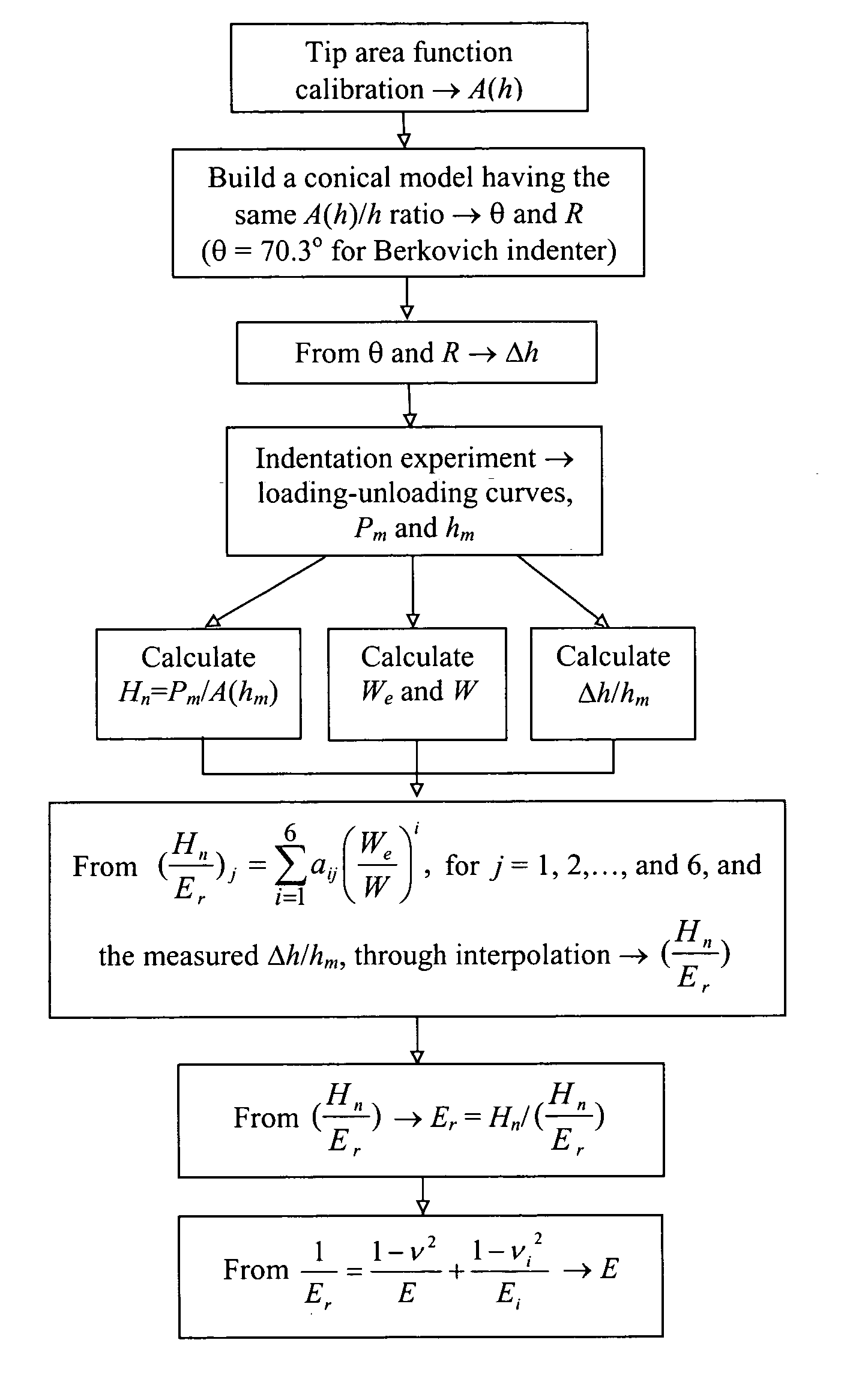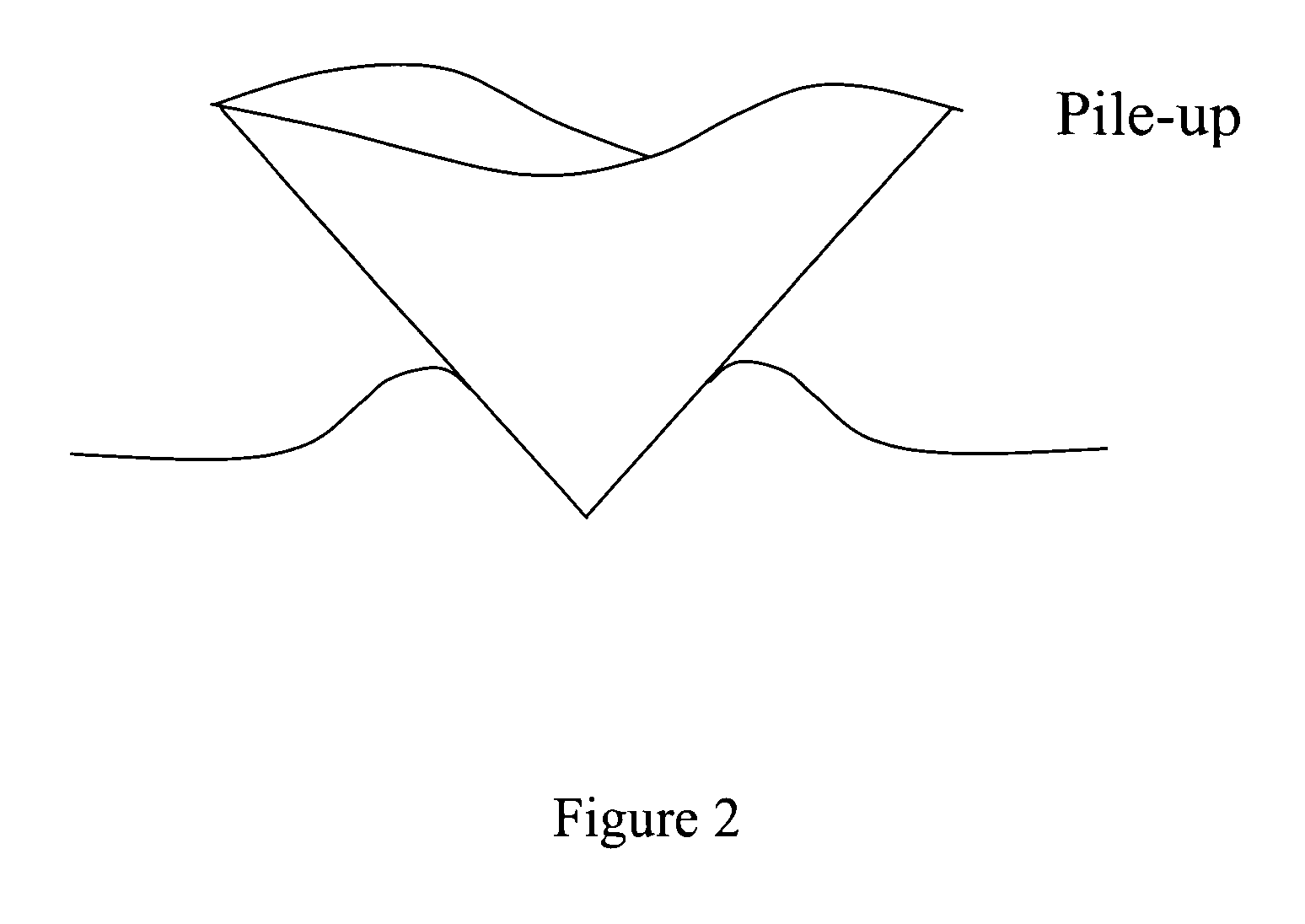Method of determining elastic modulus
a technology of elastic modulus and modulus, applied in the direction of mechanical measuring arrangement, force/torque/work measurement apparatus, instruments, etc., can solve problems such as difficult to be determined accurately, signal-to-noise ratio, and possible introduction of errors
- Summary
- Abstract
- Description
- Claims
- Application Information
AI Technical Summary
Benefits of technology
Problems solved by technology
Method used
Image
Examples
examples
Experimental Verification of the Method
[0047] The validity of the method was examined through indentation tests made on five materials, i.e. S45C carbon steel, 6061 aluminum alloy, tungsten single crystal, aluminum single crystal and fused silica. The surfaces of these samples were polished to mirror finish. A Nanoindenter IIs (Nano instruments inc.) equipped with a diamond Berkovich indenter with certain bluntness was used to perform the experiments. The real tip area function was calibrated first. The Berkovich indenter used in this exemplary demonstration is modeled with a conical indenter shape with a half-included angle θ of 70.3 degree and a spherical cap with a radius of R=650 nm. To show the equivalency between the real indenter tip and the non-ideal conical model, the calibrated area function A(h) of the former is converted into a radius function r(h)≡[A(h) / π]0.5, which is in good agreement with the radius of the conical model at all depth h. The absolute bluntness is thu...
PUM
| Property | Measurement | Unit |
|---|---|---|
| half-included angle | aaaaa | aaaaa |
| Poisson's ratios | aaaaa | aaaaa |
| elastic modulus | aaaaa | aaaaa |
Abstract
Description
Claims
Application Information
 Login to View More
Login to View More - R&D
- Intellectual Property
- Life Sciences
- Materials
- Tech Scout
- Unparalleled Data Quality
- Higher Quality Content
- 60% Fewer Hallucinations
Browse by: Latest US Patents, China's latest patents, Technical Efficacy Thesaurus, Application Domain, Technology Topic, Popular Technical Reports.
© 2025 PatSnap. All rights reserved.Legal|Privacy policy|Modern Slavery Act Transparency Statement|Sitemap|About US| Contact US: help@patsnap.com



